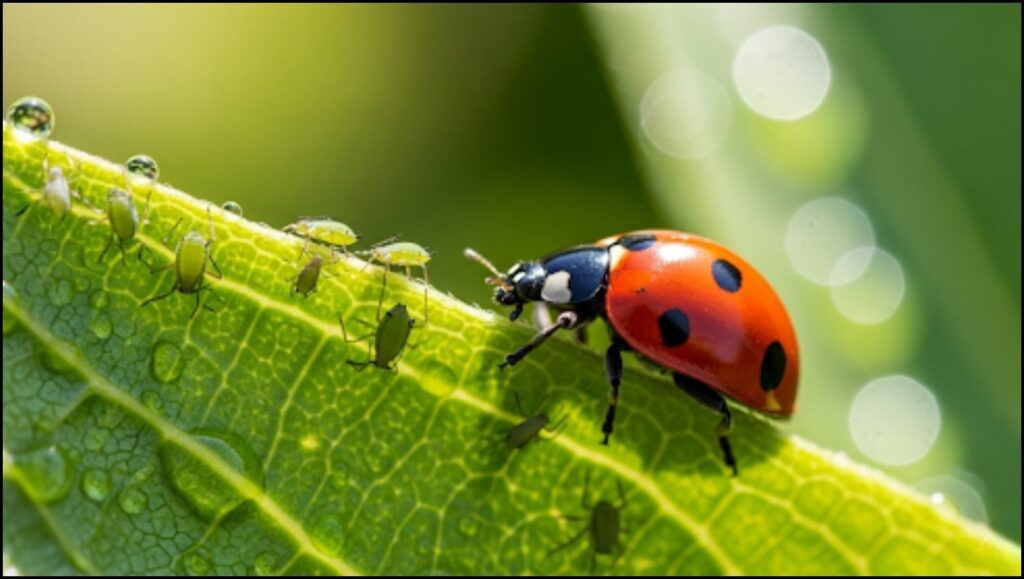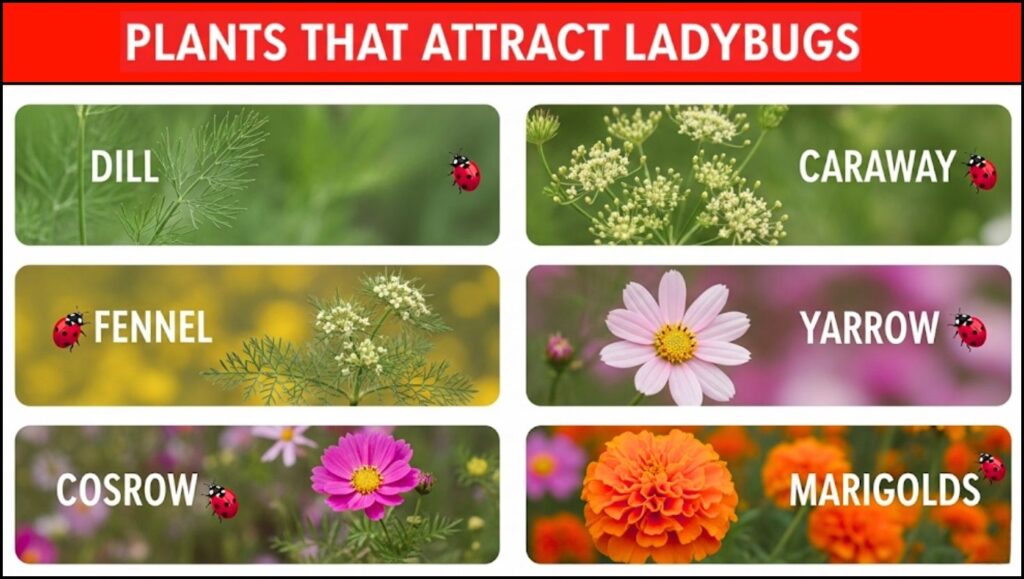
Ladybugs, a cornerstone of integrated pest management, are becoming increasingly vital as growers seek sustainable alternatives to chemical pesticides. Gardeners and agricultural professionals worldwide are turning to a strategic, horticultural approach known as “companion planting” to attract these beneficial insects. By cultivating specific plants, they create habitats that not only draw in ladybugs but also support their life cycle, providing a powerful, natural form of pest control. This method is gaining traction as an environmentally sound alternative to traditional chemical interventions.
The Growing Appeal of Natural Pest Control
The use of synthetic pesticides has come under scrutiny due to environmental concerns, including soil degradation, water contamination, and harm to non-target organisms. This has fueled a global movement toward more sustainable agricultural practices, with integrated pest management (IPM) at the forefront. IPM strategies, which prioritize natural solutions and biological controls, are increasingly being adopted by both commercial farms and home gardeners. A key component of this approach is utilizing beneficial insects like ladybugs, scientifically known as Coccinellidae.
A single ladybug can consume thousands of soft-bodied pests, such as aphids, mealybugs, and scale insects, over its lifetime. Their voracious appetite makes them a highly effective and natural predator. According to a 2022 study published in the Journal of Economic Entomology, ladybugs are particularly effective against aphids, with one larva capable of eating up to 400 aphids before maturing into an adult. This natural predation helps maintain ecological balance without the collateral damage often associated with broad-spectrum insecticides.
Creating a Ladybug-Friendly Habitat
Attracting ladybugs requires more than simply planting a few flowers. The strategy involves creating a complete ecosystem that provides them with food, water, and shelter throughout their life cycle. This begins with understanding their needs. Adult ladybugs feed on both nectar and pollen in addition to pests, making flowering plants essential. The presence of aphids and other pests on these plants provides a direct food source for their larvae, which are the most voracious predators.
This holistic approach, as outlined by the University of California, Davis, in its pest management guidelines, emphasizes diversity. Planting a variety of species ensures a continuous food supply and habitat for ladybugs, supporting them from early spring through the late fall. Providing water sources, such as a shallow dish with pebbles, also encourages them to stay in the area.
Seven Plants That Attract Ladybugs
The following plants are particularly effective at attracting ladybugs due to their pollen-rich flowers and ability to host pest populations, creating a ready food source for ladybug larvae.

- Dill (Anethum graveolens): A widely cultivated herb, dill produces large, flat-topped clusters of tiny flowers, known as umbels. These umbels are a rich source of pollen and nectar for adult ladybugs. Dill also attracts other beneficial insects, including lacewings and parasitic wasps, further enhancing its value in an IPM system.
- Fennel (Foeniculum vulgare): Like dill, fennel belongs to the carrot family (Apiaceae) and features umbels of yellow flowers that are highly attractive to ladybugs. It’s a perennial herb that provides a long season of blooms, offering a sustained food source. Fennel’s strong aroma can also deter some pests.
- Cilantro/Coriander (Coriandrum sativum): When allowed to bolt and flower, cilantro produces delicate white blossoms that are a favorite of ladybugs. The plant’s lifecycle is relatively short, so succession planting is recommended to ensure a continuous bloom.
- Yarrow (Achillea millefolium): A hardy perennial with clusters of small, colorful flowers, yarrow is a robust plant that provides excellent shelter and a consistent nectar source. Its complex structure offers protection for ladybugs during cooler nights and from adverse weather.
- Caraway (Carum carvi): This biennial plant, which flowers in its second year, has white umbels that are a powerful lure for ladybugs. Caraway is easy to grow and can be a strategic addition to a garden for long-term pest control planning.
- Dandelions (Taraxacum officinale): Often considered a weed, dandelions are a critical early-season food source for many beneficial insects, including ladybugs. Their early bloom provides essential pollen and nectar when other plants may not be flowering, helping to establish ladybug populations early in the season.
- Cosmos (Cosmos bipinnatus): A popular annual flower, cosmos produces an abundance of blooms from summer until the first frost. The open, bowl-shaped flowers are easily accessible to ladybugs, providing a reliable source of pollen and nectar for extended periods.
Best Practices and Expert Analysis
The success of using attractant plants hinges on strategic placement and thoughtful garden design. Dr. Laura S. Jones, an entomologist and professor at Cornell University, emphasizes the importance of integrating these plants throughout a garden rather than grouping them in one area. “By interspersing these plants among your crops, you create ‘islands’ of beneficial insect activity,” Jones stated in a recent interview. “This ensures that as soon as a pest problem arises on a crop, a ladybug or its larvae are already nearby and ready to act.”
Experts also advise against the use of broad-spectrum pesticides, which can kill ladybugs and other beneficial insects alongside the targeted pests. A report from the U.S. Department of Agriculture (USDA) highlights that while chemical interventions may offer a quick solution, they often disrupt the natural ecosystem and can lead to a resurgence of pest populations in the long term, as the pests’ natural predators have been eliminated.
Furthermore, managing expectations is key. Natural pest control is not an instantaneous solution. It requires time to establish a healthy insect population and a balanced ecosystem. This approach is preventative and long-term, not reactive. It is about fostering a resilient garden environment that can manage minor pest outbreaks on its own.
The Broader Implications for Sustainable Agriculture
The shift toward using beneficial insects and attractant plants is part of a larger global trend toward sustainable farming practices. This movement, driven by consumer demand and environmental regulations, seeks to reduce the reliance on synthetic chemicals. The European Union, for example, has implemented policies to significantly reduce the use of pesticides, pushing farmers to explore biological alternatives.
As research continues, more plants and strategies for attracting beneficial insects are being identified. The practice of companion planting not only aids in pest management but also contributes to greater biodiversity, improving soil health and pollination. This holistic method of gardening and farming is proving to be a viable, effective, and environmentally responsible path forward.
Grow Creeping Thyme the Easy Way—Fragrant, Beautiful, and Bee-Friendly
